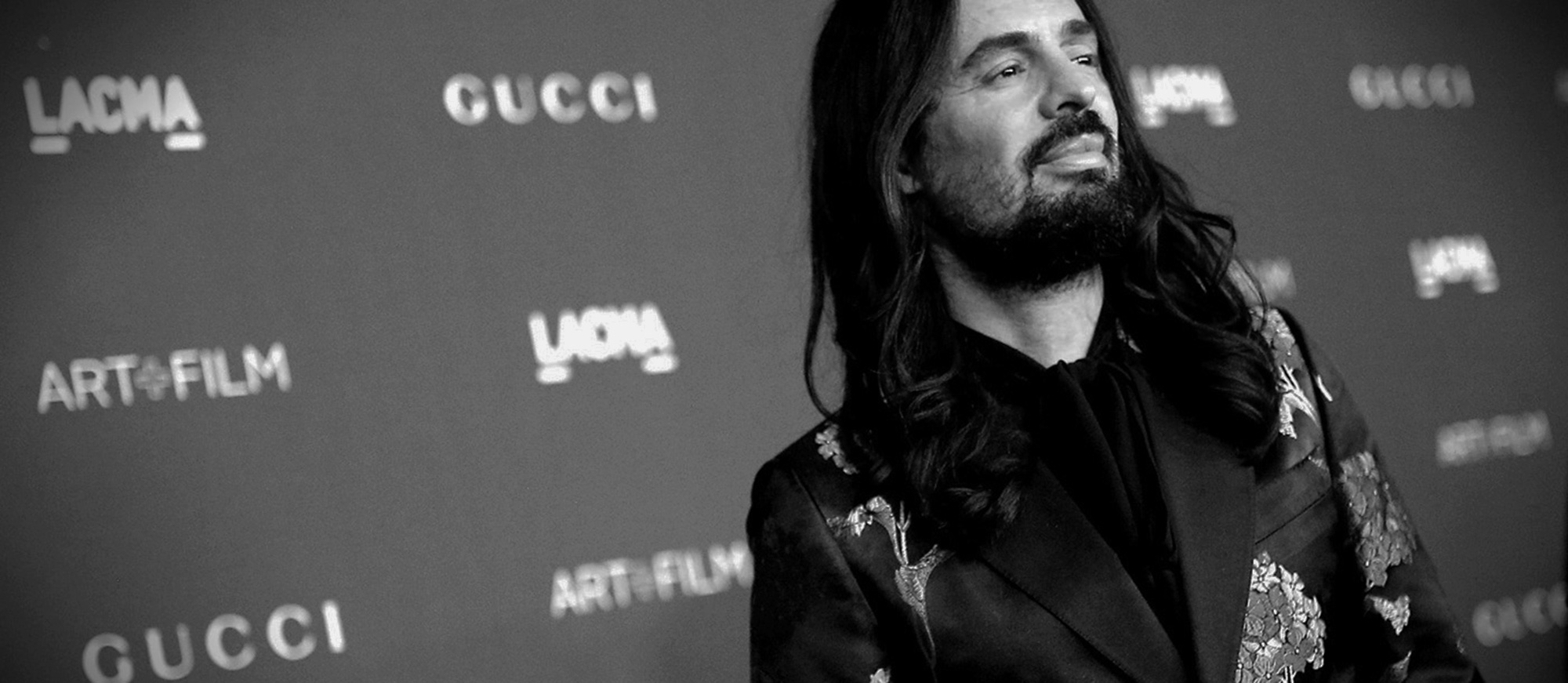Alessandro Michele, Gucci’s newest trump card
Gucci’s continuous growth proves the continuous influence of the brand’s Creative Director Alessandro Michele in dictating the fashion taste of global consumers. Michele, who has helmed the Gucci house for less than 2 years, has been pivotal in the company’s recent successes.
- Michele’s bold and imaginative designs have impressed and won over the hearts of Chinese millennials, earning the brand a seat in one of the most potent segments of China’s luxury market.
- The impressive record-high sales figures, younger generations’ high interest in the brand’s new product lines (i.e. home decor, furniture and perfume), and the constant organic promotion by a slew of top-tier online influencers including celebrities Liu Wen and Yang Mi, and fashion bloggers gogoboi and Becky Li, are all signs of Gucci’s success and Michele’s competency with this demographic.
Doubts about Gucci’s growth in the long run?
Despite the recent successes of Gucci, there are still some who question the sustainability of Gucci’s growth. Some fashion critics and industry observers hold the view that Gucci may soon lose steam if it cannot keep up with the rapidly evolving appetite of young Chinese shoppers (who are known to be one of the most demanding and least loyal buyers of luxury brands).
These doubts are not completely unfounded either:
- Followers of Gucci will only too vividly remember that in 2014, they faced their slowest-ever sales growth, at a mere 0.2%.
- This was in stark contrast to competitors like Bottega Veneta (at 13.4%) and Saint Laurent (at 42%) who were seeing their figures soar.
- In the same year, Global Blue asked a sample of 501 people (250 from China, 151 from Japan and 150 from Russia): “What is your dream luxury fashion brand?”. Despite being allowed multiple answers, only 17 of the Chinese respondents picked Gucci, 14 less from the previous year. The brand received similar results for the other two countries.
However, to Gucci’s CEO Marco Bizzarri, who, under his leadership, has put creativity at the core of the brand culture, this pessimism may not hold true.
The dawn of a new era for Gucci
While Alessandro Michele provided the creative insight necessary in recapturing the attention of the Chinese shopper, Gucci’s newest CEO Bizzarri was the mastermind that would pave the way for this to all happen, and in turn for Gucci to enter a new era.
Since his arrival at Gucci in 2015, Bizzarri revolutionised the office atmosphere. From removing all black-and-white images of the brand’s deceased supporters like Grace Kelly and Jacqueline Kennedy Onassis, to implementing the “Shadow Executive Committee”.
- The changes were meant to set Gucci apart from its glorious history and bring in fresh ideas, creativity, joy, and emotion.
- In particular, the “Shadow Executive Committee” empowers lower-level employees by giving them a medium in which they can voice their opinions and thoughts for a stronger company and fresher take on strategies. Bizzarri mentions that “Gucci Places”, a travel app released in August this year was a result of the committee.
In regards to the doubts to Gucci’s future from the public, Bizzarri seems unfazed. During the WWD’s CEO Summit on October 25, Bizzarri was confident enough to say that almost every consumer on the planet (no matter the age and nationality) is “Feeling Gucci” (or feeling good).
The driving force behind Bizzarri’s confidence — and Gucci’s recent appeal among their shoppers?
Bizzarri explains that the brand culture that he has instilled within Gucci, one that values creativity, instinct and intuition, will continue to fuel the newfound enthusiasm that consumers are now [once again] having for the brand.
- “Creativity was put again at the center of Gucci,” said him. “…[And] respect, happiness, passion, empowerment, inclusivity are values that foster creativity.”
- He believes: “intuition and instinct are ultimately more important than intellect and rationality”. He firmly stated that one of the best professional choices he made—appointing Michele, a person who was not even on the list of candidates for Creative Director—was based entirely on his intuition and instinct.
- “[Alessandro] opened the door and was wearing the Princetown fur loafers,” said Bizzarri. “We were thinking the same way — for me, it was from a business standpoint, and for him, design. It was very much about empathy. You feel like you found the right person immediately.”
From Bizzarri’s talk at the event, his approach to managing this iconic fashion label is clear: preserve the most human side of luxury culture which prioritises creativity, instinct, and intuition over rational, strategy, and technology.
In spite of the out-there nature of this approach, it definitely has its merits. With an abundance of high-end brands in China focusing on the modern, superficial metrics like social media and KOL traffic over human creativity in fear of falling behind the competition . . . Perhaps Bizzarri’s approach to capturing the hearts (and wallets) of the Chinese shopper is one that luxury brands should pay attention to in 2018.
Don’t forget to share this with friends and colleagues. If you enjoyed reading this and would like to read more luxury related content, feel free to take a look at our Luxury Case Studies Library!






